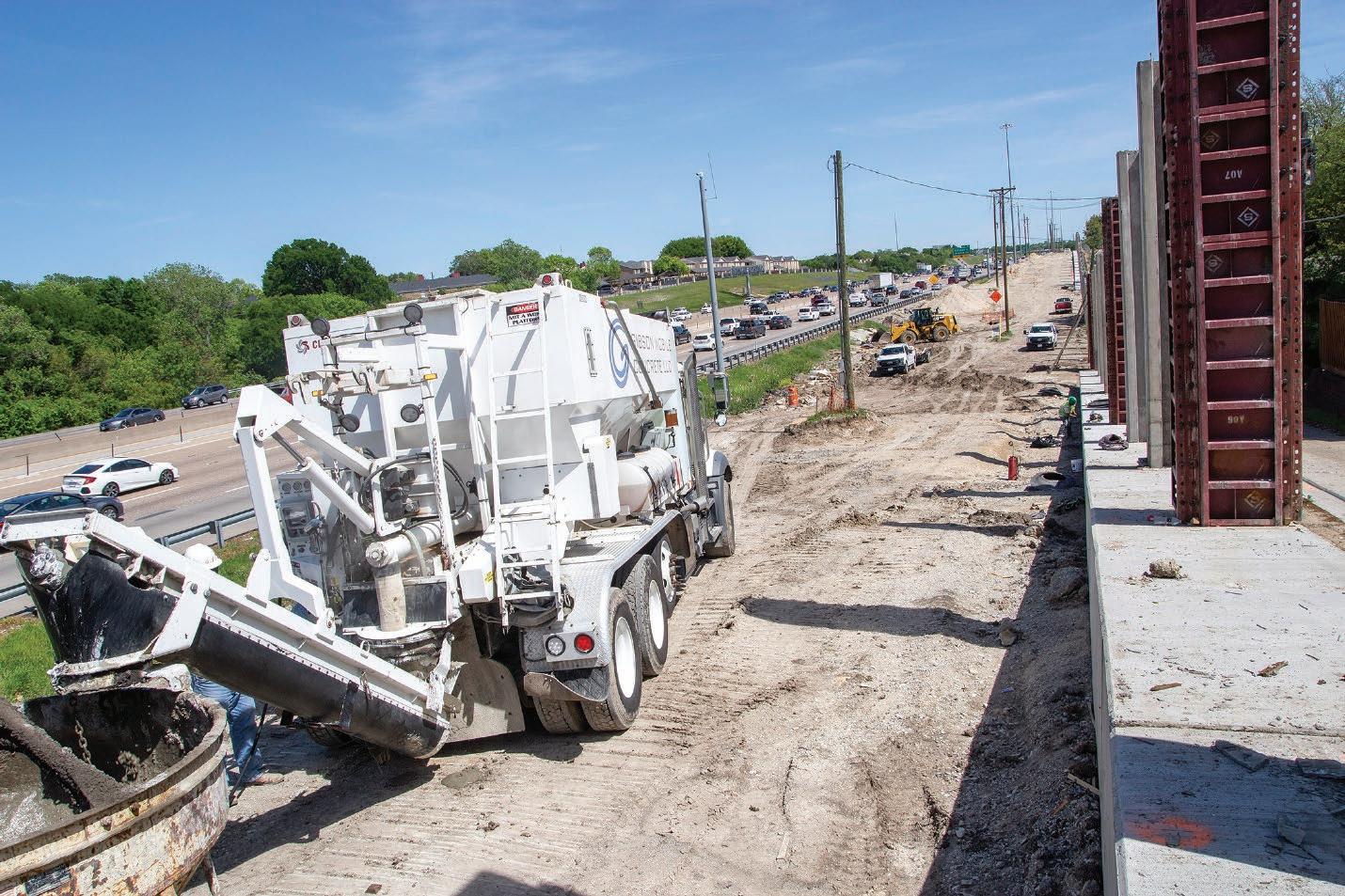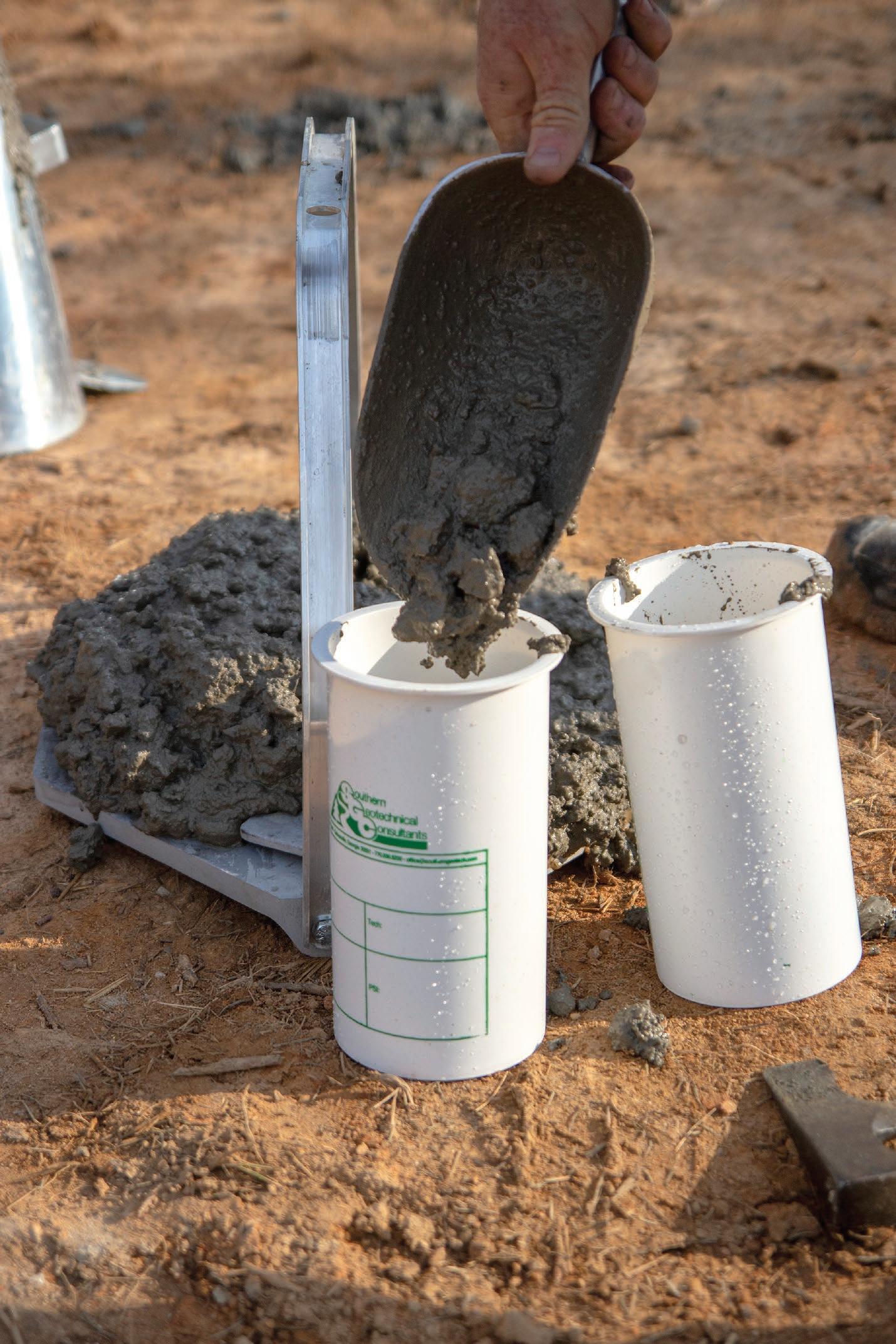
5 minute read
Mobile Cement Mixing Can Help Meet the Carbon Challenge
Tom Cropper, Editor
Airports around the world are setting themselves the challenge to become net zero somewhere in the 2030s. Could mobile concrete mixers provide part of the answer?
THE AVIATION sector comes in for intense criticism for its carbon output, but it’s not always fair. While it is one of the most carbon intense industries in the world, the sector has worked harder than most to reduce its impact on the environment. While the Paris Climate Accords commit the world to becoming carbon neutral by 2050, many airports around the world are going a step further with some hoping to hit the target in the early 2030s.
Ambitious Targets
At the UK’s largest airport, Heathrow, they have already reduced emissions from its operations by more than 90%. It’s the first international hub to become carbon neutral and the first to commit to achieving net zero carbon emissions by the mid-2030s. Its action plan ‘Target Net Zero’ aims to decarbonize operations, flights and help the industry meet its overall plan of net zero by 2050 12 .
Towards the end of 2019, Birmingham Airport also set itself a target of net zero by 2033. The airport’s CEO, Nick Burton, admitted that they did not yet have the answers about how this will be done, but they are currently working on an action plan which they hope will answer some of those questions.
“We don’t have all the answers about how we will hit this target,” he said, “but we are confident that through innovation and collaboratively working with industry, government, manufacturers, on-site partners and employees, we can reach our target by 2033 13 .”
Going Beyond Paris
It’s difficult to overstate just how big a challenge this is. Airports such as Heathrow and Birmingham have decided to move more quickly than the Government and the wider aviation industry which have set their sights on hitting the target by 2050. However, they will be doing so against a backdrop of a rapid growth in airport traffic and capacity. Although COVID 19 has slowed growth, the longterm picture remains the same. Millions of people are taking to the skies every year and capacity will need to increase in order to meet it.
For an example of the uncertainty surrounding expansion plans we can take the Aviation Environment Federation’s analysis of Gatwick’s 2019 Master Plan for expansion 14 . This allows for opening its existing standby runway while also opening up land for building another. It hopes to grow passenger numbers to 70 million per annum by 2032/33, a 53% increase on the 45.7 million passengers who used the airport in 2017/18 15 .
However, it is uncertain about its impact on the environment. The Masterplan estimates emissions will grow from 0.77MtCO2 in 2017 to 0.95MtCO2 in 2028, according to the Aviation Environment Federation. However, estimates from the Department of Transport which include more indirect emissions, suggest they may hit 2.7MtCO2 by 2050 in a scenario in which Heathrow opens a third runway and Gatwick’s standby runway remains unused 16 .
The unavoidable conclusion is that it will be very difficult to expand capacity in the way airports want while meeting those targets. To do so, airports will have to look at every part of the process including the way in which cement is mixed and transported to the work site. Here, tremendous gains are to be had by moving beyond traditional methods of cement mixing towards something which is more mobile and efficient.
How Mobile Concrete Mixing Can Help
Mobile concrete mixing is one way in which airports can achieve their emission reduction targets. It allows for more precise measuring Although COVID 19 has slowed growth, the longterm picture remains the same. Millions of people are taking to the skies every year and capacity will need to increase in order to meet it
Mobile concrete mixing is one way in which airports can achieve their emission reduction targets. It allows for more precise measuring and mixing of concrete and for all equipment to be driven to the job site before concrete mixing begins. This translates to less water usage and less waste
AN AIRPLANE TAKES OFF IN THE DISTANCE AS A CREW REPAIRS A RUNWAY WITH A VOLUMETRIC MIXER.
and mixing of concrete and for all equipment to be driven to the job site before concrete mixing begins. This translates to less water usage and less waste.
The latest concrete mixers also incorporate software which provides enhanced real time data about cement use, generating insights which operators can use to drive further improvements. With this information, users can analyze data such as aggregate use and the run time of the mixer. This allows them to optimize the energy and material use for any situation. This will help to better plan forward schedules and the use of materials.
Mobile mixers also open up the use of volumetric cement mixing. This is becoming more popular with operators as it allows for faster mixing, helps to get repairs done and open runways more quickly. However, this is very difficult for traditional cement mixers as any delay in transport to the work site can result in the mix being spoilt and unusable. Mobile mixers allow it to be taken directly to the work site, cutting down the risk of delay and waste.
Upgrading to new work vehicles can also improve efficiency. Modern engines are substantially more efficient. However, many vehicles used to transport equipment around the airfield are a decade or more old. Moving to newer models may involve a capital outlay, but they will contribute towards carbon goals by using less fuel. Airports are moving to electrical and hybrid vehicles on the ground to further cut their carbon footprints.
Technology, then, can be a crucial tool in the fight against climate change. It helps airports meet their twin, and sometimes contradictory, goals of increasing capacity while also reducing the use of carbon. Moving from static to mobile cement mixing processes may seem to be a small detail in the wider scheme of things, but to meet a challenge on this scale, such details will be immensely important. To reduce carbon output while increasing productivity, the aviation sector will need to transition equipment which can improve performance while using fewer resources. Mobile cement mixers are a vital part of that equation.






